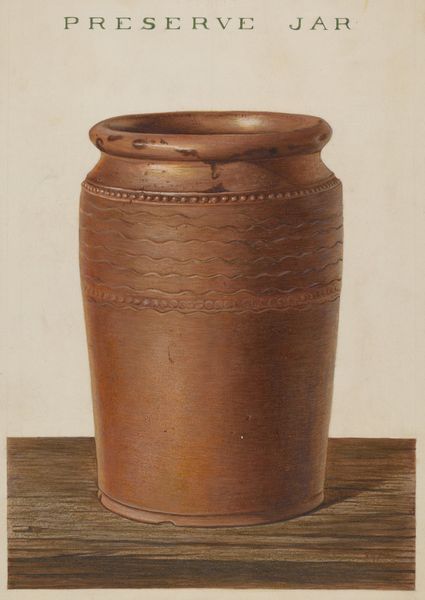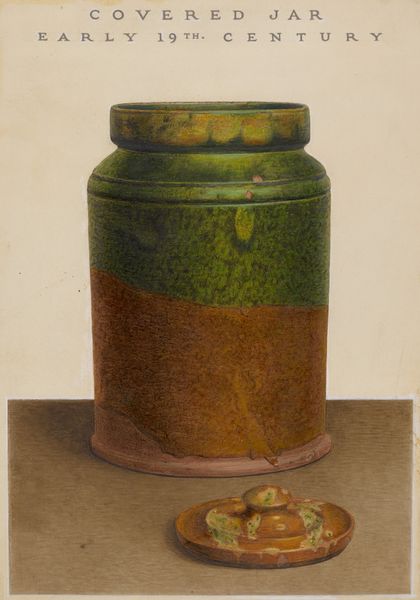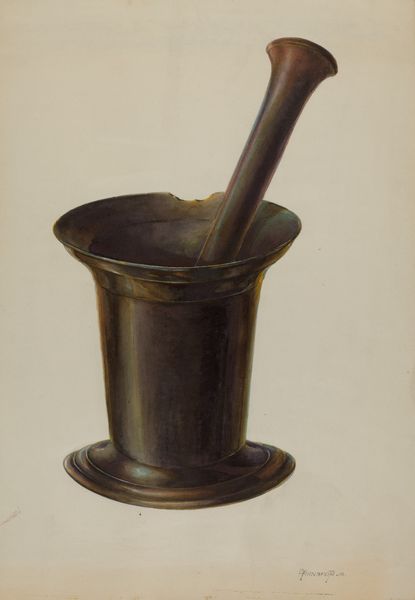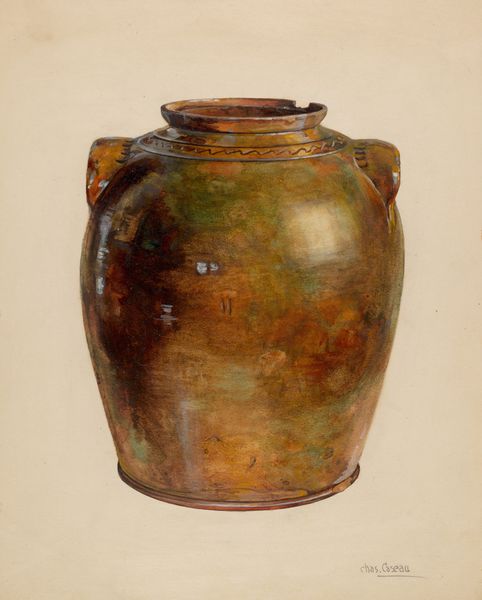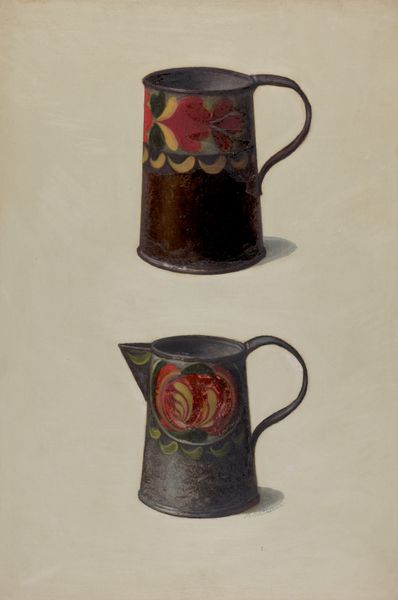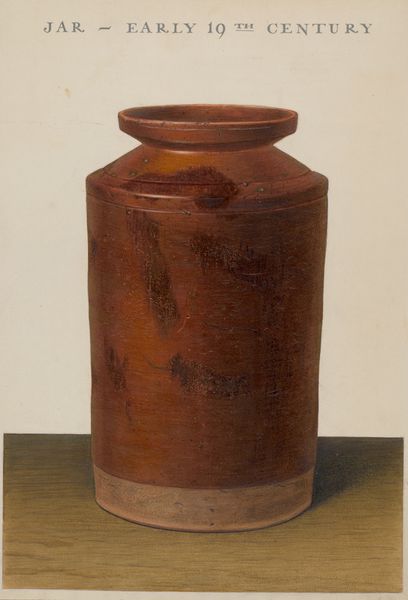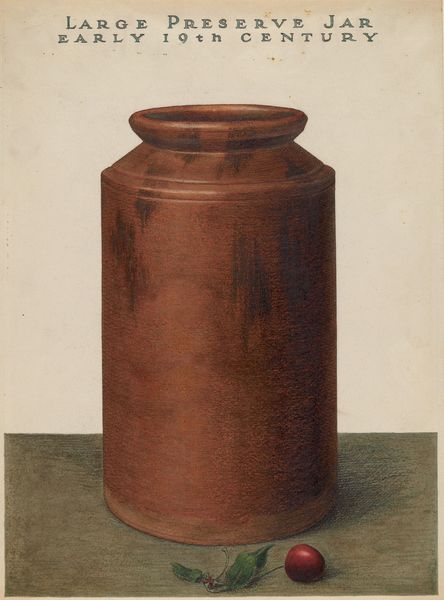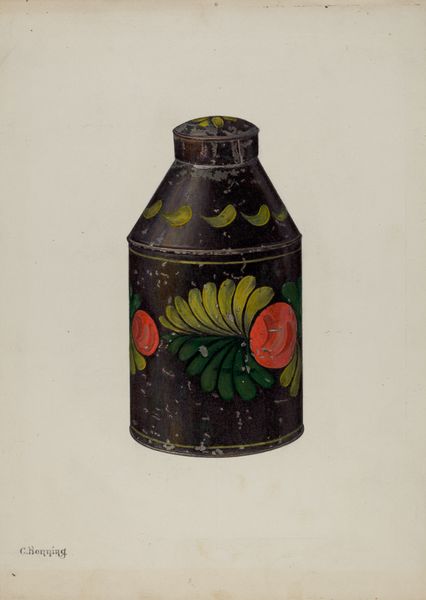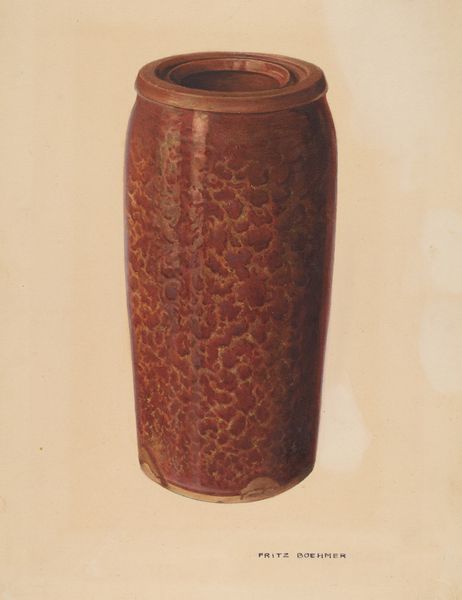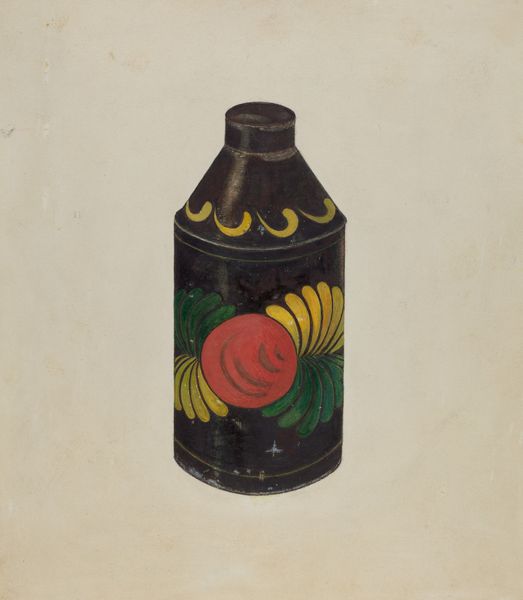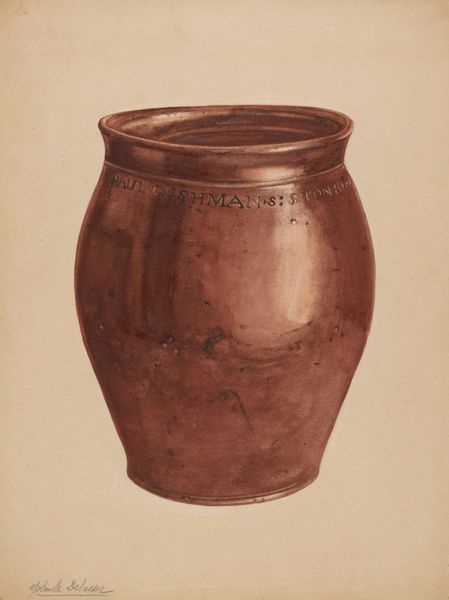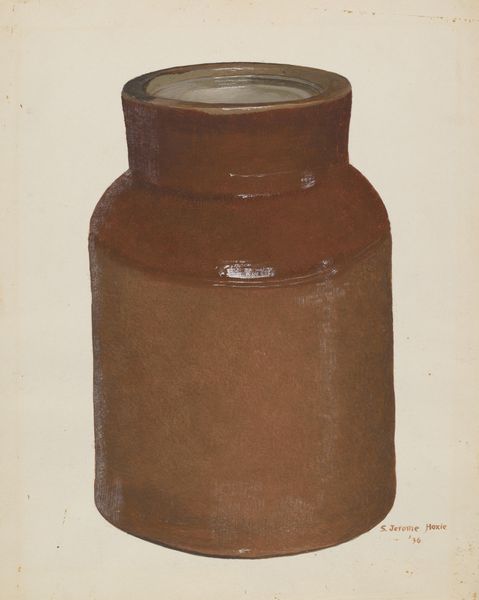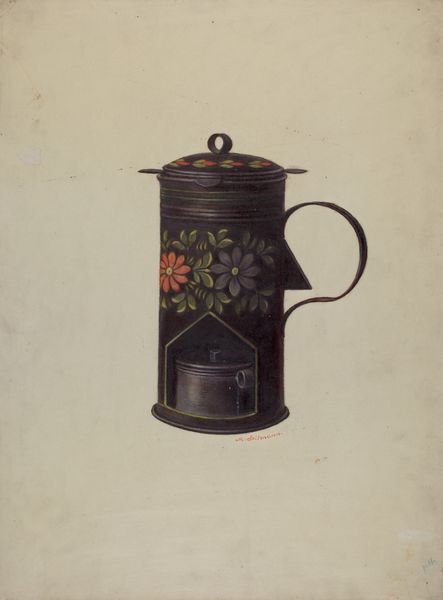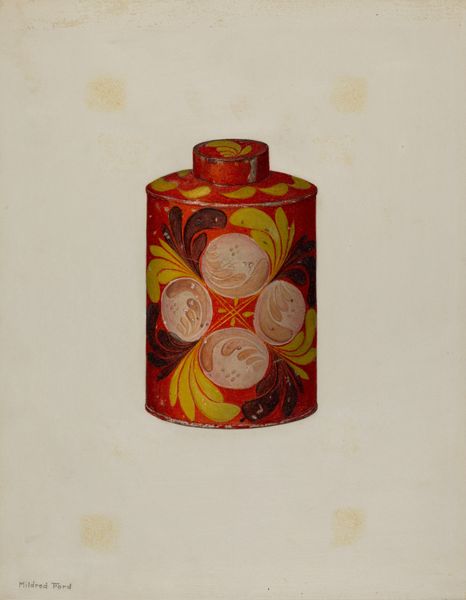
drawing, watercolor
#
drawing
#
caricature
#
watercolor
#
watercolour illustration
#
decorative-art
#
watercolor
Dimensions: overall: 38.3 x 25.2 cm (15 1/16 x 9 15/16 in.) Original IAD Object: 3 1/2" wide; 4 3/16" high
Copyright: National Gallery of Art: CC0 1.0
Curator: Before us is Max Soltmann’s “Toleware Tin Cannister,” a watercolor drawing from around 1937. At first glance, it feels deceptively simple, with its neutral background and direct rendering of the objects. Editor: My immediate impression is one of folk art, though rendered with a sophisticated hand. The colors are muted but warm, and I'm drawn to the decorative painting. There's something inherently craft-based about this piece. Curator: Precisely. Toleware, typically made of tin and then painted, was a common household item in the 19th and early 20th centuries. It represents not just functionality but also the intersection of domestic life, labor, and artistic expression often marginalized as "women’s work.” Where would this be found and by whom? How does it play into larger dialogues? Editor: Well, given the date, one might see this work as commenting on shifting aesthetics in household items due to increased industrialization and factory output. Here we have the pre-packaged, but the drawing presents an opportunity for art within a living space and questions what's perceived as ‘beautiful’ or valuable during a time of increased production, challenging rigid notions of taste. Curator: Good points. We have to consider the cultural and gendered implications: items like toleware were historically connected to women's sphere, craft, decoration. Did Soltmann use it as critique? A comment about artistic practice at the moment, craft versus the Fine Arts dichotomy, that needs unpacking with nuance. Editor: I agree, it becomes really important to explore the relationship of these designs to domestic labour as that could expose further intersectional aspects. Also, in the context of watercolor as medium, this points toward making art affordable and how design becomes more accessible to broader social classes at that historical moment. The cannister could mean much more. Curator: True! I like the dialogue we’ve unearthed from this piece. Seeing domestic, material culture items celebrated can bring attention to overlooked contributions, especially by female creatives who are sometimes devalued by art institutions. This elevates an aesthetic linked to "feminine" and everyday into something worth intellectualizing, analyzing. Editor: And by drawing attention to it, we’re acknowledging those artistic efforts and the societal structures in which those works and traditions lived. Examining a Toleware tin canister sparks broader discussions!
Comments
No comments
Be the first to comment and join the conversation on the ultimate creative platform.
